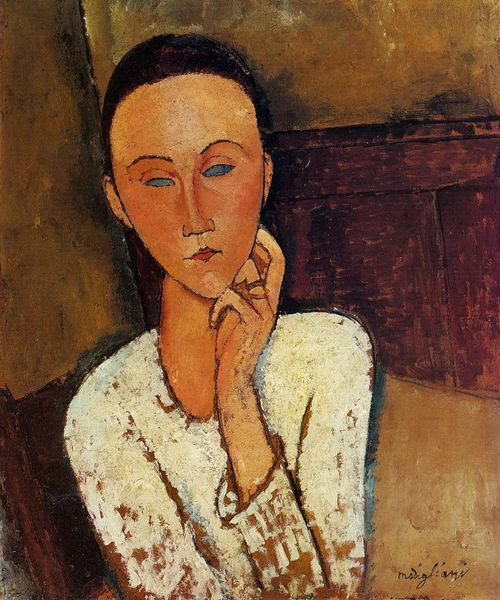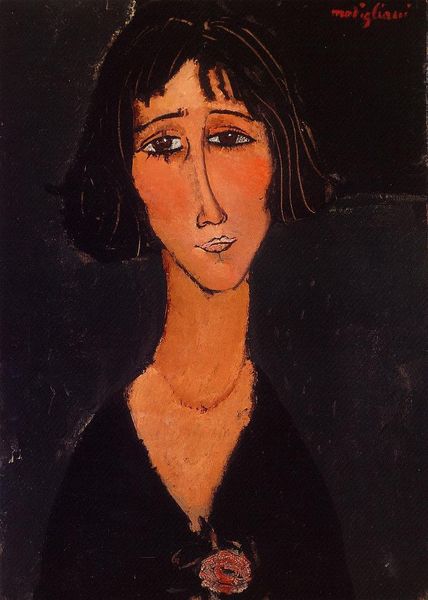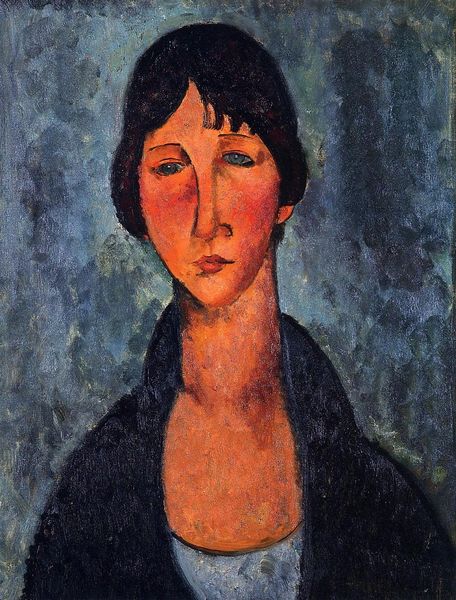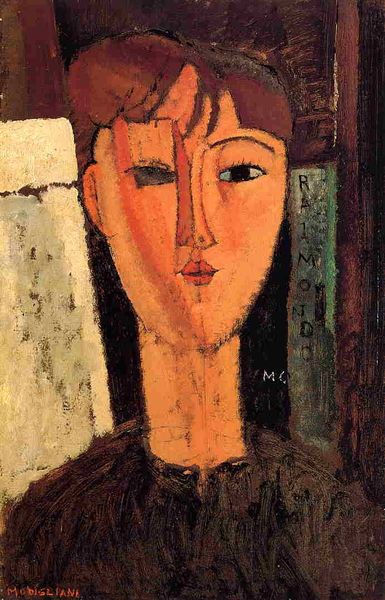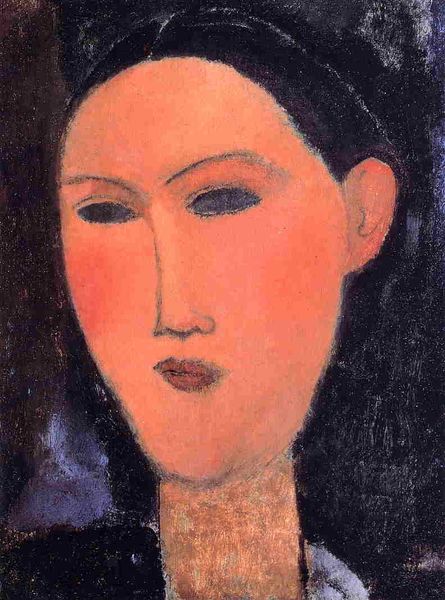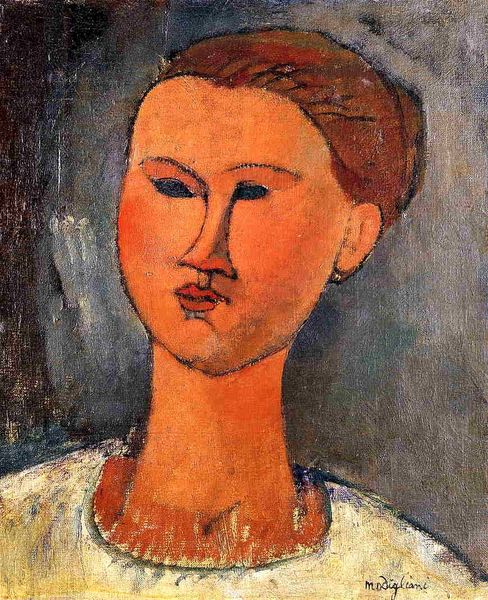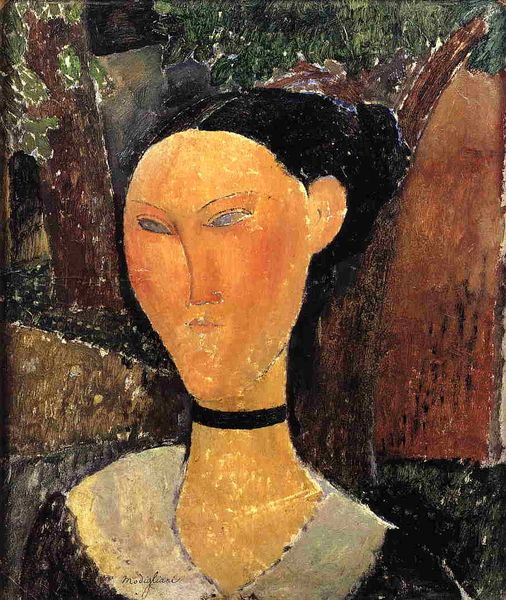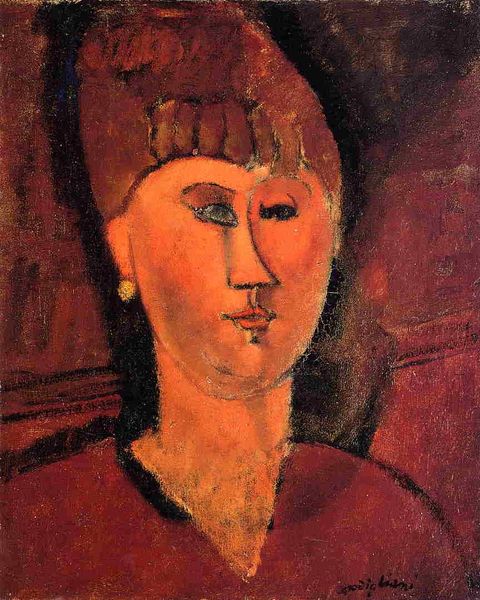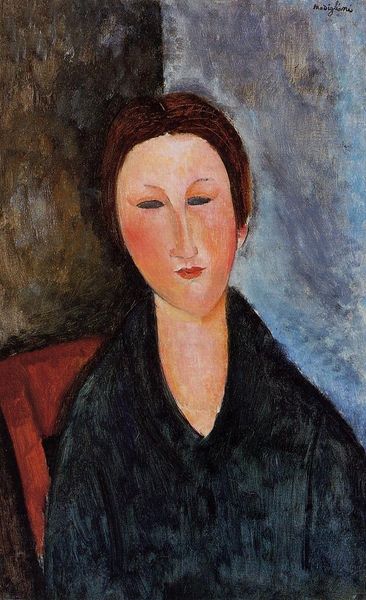
painting, oil-paint
#
portrait
#
painting
#
oil-paint
#
figuration
#
oil painting
#
portrait reference
#
expressionism
#
modernism
Dimensions: 55 x 38.1 cm
Copyright: Public domain
Curator: Look at those eyes. Melancholy, isn't it? Almost otherworldly. Editor: It certainly is. This is Modigliani's "Woman with White Coat," painted in 1917. It's a stunning example of his portraiture, held here at the Museo Nacional de Bellas Artes. What grabs me first is always how Modigliani seems to lengthen and smooth everything out. Curator: Exactly! It’s like he's not just painting a person, but an idealized essence. The elongation…it's not quite naturalistic, is it? There's a touch of the divine, reaching for something beyond the physical. The lines flow; there are few hard angles here. I imagine the studio like a sanctuary of curves and rhythm when this came to life. Editor: You’ve nailed it! It is Expressionism, of course, and while it’s quite subtle here, Expressionism really pushes against mere representation. Modigliani, in his time, straddled so many influential artistic circles, and it shows, from his roots in Post-Impressionism, his dabbling in Cubism, to this singular style. Curator: And the limited palette – that earthy ochre and deep burgundy background. It's warm, but restrained, allowing the woman’s face to be the luminous focal point. The muted tones contribute to this feeling of inner quiet, as if she's lost in thought. Her presence permeates the scene. What can you deduce from such carefully chosen brushstrokes? Editor: It really focuses attention on the sitter's features, particularly those elongated features and almost vacant eyes. There's also something profoundly modern about stripping away context, which aligns with Modigliani’s involvement in Parisian artistic circles that emphasized challenging academic conventions. Even the title, simply describing her coat, downplays narrative, inviting viewers to create their own. Curator: It’s curious. Almost as if he knew this woman, felt her…yet she remains nameless, unknowable, forever caught in a moment of pensive introspection. I can imagine sitting with Modigliani as he worked, both silent, yet exchanging thoughts deeper than words could allow. It's truly like time stands still. Editor: In a sense, that's the power of museums: to allow us that shared timelessness and contemplate artistic encounters that transcend generations. And with Modigliani, his ability to convey such profound emotion, within deceptively simple means, is a testament to his genius.
Comments
No comments
Be the first to comment and join the conversation on the ultimate creative platform.

